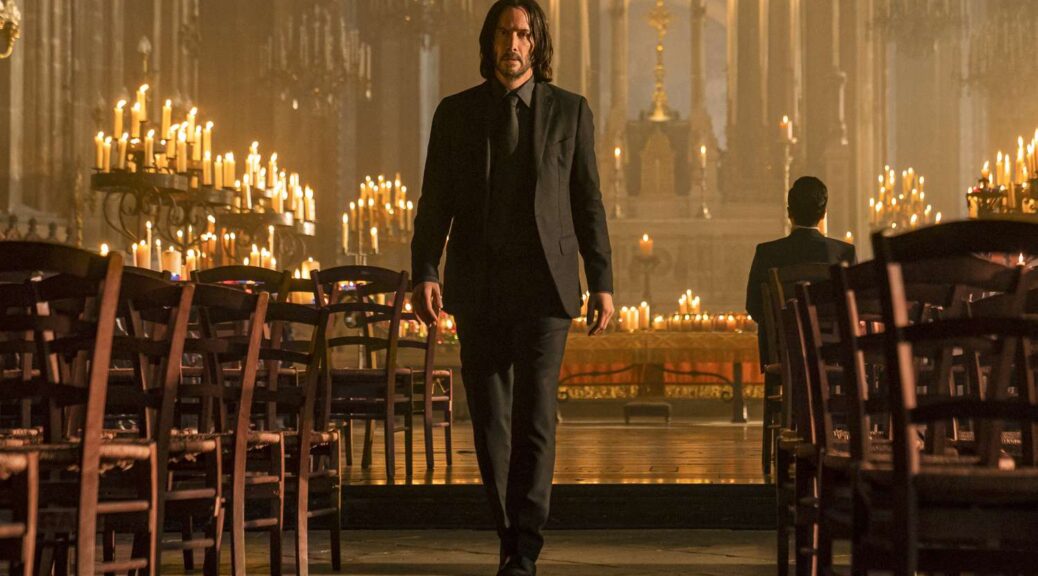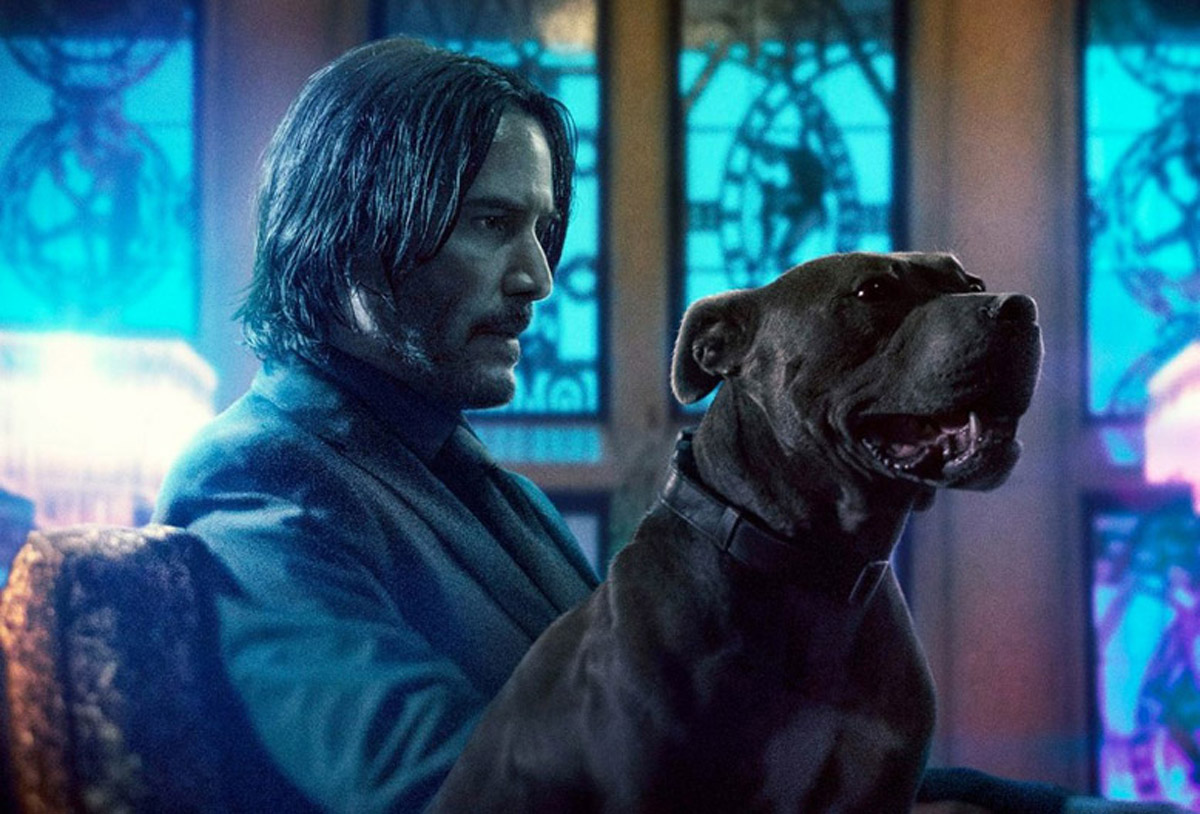John Wick: Chapter 4
by Hope Madden
What do you want to know? John Wick: Chapter 4 doesn’t disappoint.
Guns, blades, cars, swords, fire, motorcycles, explosions, horses, bludgeonings, fisticuffs, playing cards, dogs. Of course, dogs.
Donnie Yen, Hiroyuki Sanada, Scott Adkins, Marko Zaror, Clancy Brown, Bill Skarsgard, Shamier Anderson, Aimee Kwan, Ian McShane, Laurence Fishburne, Keanu Reeves and Lance Reddick. Farewell, Lance.
Do you need to see the first three installments to follow the plot? No. It’s good to know that John Wick (Reeves) wears a bulletproof suit. Otherwise, he’d just look silly pulling up his lapel all the time. Other than that, you can probably figure out the gist. The stakes? High. The villains? Bad. The good guys? Professional villains. The best thing about being four episodes in is the needlessness of context or exposition.
Chad Stahelski returns to helm the latest, having carved out an impressive niche in action with his 2014 original. Since then, John Wick has become a cultural phenomenon sparking more copycat action flicks than Die Hard or Taken and solidifying Reeves as an undeniable if unusual cinematic presence.
Chapter 4 is not just more of what makes the series memorable, it’s better: better action, better cinematography, better fight choreography, better framing and shot selection. Sandwiched between inspired carnage are brief moments of exposition set within sumptuous visions of luxury and decadence. This movie is absolutely gorgeous.
One of the reasons each episode of this franchise surpasses the last is that the franchise is not exactly about John Wick. It’s a love letter to a canon, a song about the entire history of onscreen assassins and their honorable, meticulous action. Genre legends arrive and we accept a backstory that isn’t detailed or necessary because the actors carry their cinematic history with them, and that’s backstory enough.
It’s hard to believe it took this many sequels to get us to John Wick v Donnie Yen, but it was worth the wait. Yen’s wryly comedic presence injects the film with needed levity. Plus he’s a better actor than Reeves and he looks less silly when he runs.
Skarsgard – though his French accent is dubious – fits the bill as the diabolically privileged Marquis who’s forgotten that “a man’s ambition should never exceed his worth.”
Hats off to Stahelski, his entire ensemble, stunt department, action choreographers and crew. No one could have guessed back in 2014 how this would snowball, but the director at the helm has managed to up his game once again.






